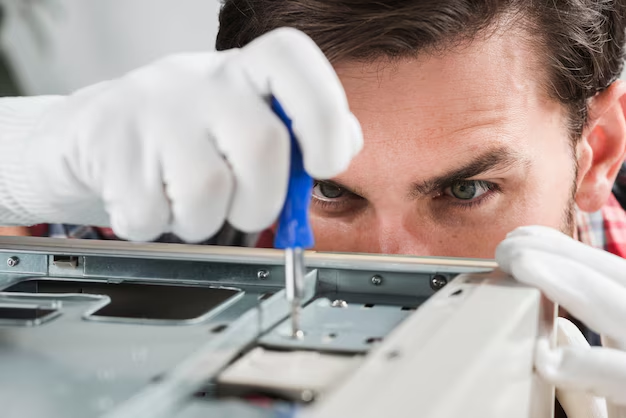How Cold Should Your Refrigerator Really Be? A Complete Guide
Imagine coming home with bags full of fresh groceries only to find them spoiled a few days later. Frustrating, right? One common cause for this is a refrigerator that's not cold enough to preserve your food. Understanding how cold a refrigerator needs to be can help you keep your food fresh and safe, ultimately saving you time and money.
🧊 Why Refrigerator Temperature Matters
Before diving into the specifics of temperatures, let's understand why it's crucial to keep your fridge at the right chill. A refrigerator's main job is to slow down the growth of harmful bacteria that can spoil food and cause foodborne illnesses. By maintaining the correct temperature, you not only extend the life of your groceries but also ensure they're safe to eat.
The Science Behind Cooling
Refrigerators work by removing heat through a cycle involving a refrigerant. When the temperature inside the refrigerator drops to the designated level, any further cooling is stopped until the temperature rises again. This cyclical process is what keeps your food fresh.
Bacteria and Food Safety
Harmful bacteria can grow rapidly in food that is held in the "danger zone" temperature range of 40°F to 140°F (4°C to 60°C). Therefore, maintaining a cool environment is key to significantly slowing down bacterial growth.
📏 What Temperature Should Your Refrigerator Be?
Ideal Temperature Range
The ideal temperature for a refrigerator is at or below 40°F (4°C). However, the best practice is to keep it between 35°F and 38°F (1.5°C to 3°C). Why? This range offers a good balance: it's cold enough to keep bacterial growth at bay while not freezing your food.
Freezer Temperatures
For your freezer, the ideal setting is 0°F (-18°C). This temperature ensures that frozen items remain solid and protected against spoilage.
🌡️ Tips for Maintaining the Right Temperature
Temperature Monitoring
Using an appliance thermometer inside your fridge and freezer can give you accurate readings and peace of mind. Built-in thermometers, if available, should be consulted occasionally to ensure accuracy.
Consistent Checks
Make it a habit to check the temperature bi-weekly. Just a little shift in temperature can impact the freshness of your food.
Seasonal Adjustments
Temperature outside can affect the internal temperature of your refrigerator. During warmer months, you might need to lower the temperature setting slightly to counteract the external heat.
Signs Your Refrigerator Isn't Cold Enough
- Spoilage: Frequent food spoilage before the expiration date.
- Frost-Freezing: Foods on direct air paths freezing unexpectedly.
- Liquid Spills Decomposing: Beverages feel warmer than usual.
📋 Checklist: Keeping a Healthy Refrigerator
- 🌡️ Keep refrigerator at 35°F–38°F (1.5°C–3°C)
- ❄️ Set freezer to 0°F (-18°C)
- 🔍 Check appliance thermometers regularly
- 📅 Monitor temperatures bi-weekly
- 🧹 Clean coils and vents for efficiency
- 📦 Avoid overloading; allow air circulation
🍎 Storing Food Safely
Shelf Arrangement
Proper arrangement can improve air circulation and cooling effectiveness. Here’s a simple way to organize:
- Top Shelf: Drinks and ready-to-eat foods.
- Middle Shelf: Leftovers and dairy.
- Bottom Shelf: Raw meat and seafood, on trays to prevent drips.
- Drawers: Use crisper settings to keep fruits and veggies fresh.
Storing Meat
Raw meat should be stored only for a short time and not alongside ready-to-eat foods to prevent cross-contamination. Keep meats on the lowest shelf, ideally on a tray or contained within sealed packaging.
📦 Don’t Overcrowd Your Fridge
Refrigerators need airflow to maintain uniform temperatures throughout. Overcrowding obstructs this flow, potentially leading to warmer temperatures and decreased food safety.
Optimal Fridge Organization
- 🥤 Tall bottles in door slots
- 🥗 Salads, herbs, and greens in crispers
- 🧀 Cheeses and dairy in consistent cooler spots
- 🥩 Separate raw meats
🛠️ Maintenance and Efficiency Tips
Regular Cleaning
Dusty coils and blocked vents can make it harder for your refrigerator to maintain the right temperature. Regular cleaning and maintenance can improve efficiency and prevent problems.
Energy Considerations
An efficient fridge isn't just about keeping food cold; it’s also about energy consumption. Optimal setting, regular defrosting, and maintaining a full (but not cramped) inventory can help manage energy use effectively.
Modern Features To Look For
- Inbuilt Thermometers: Offer convenience and accuracy.
- Adjustable Shelves: For flexible storage solutions.
- Humidity Controls in Crispers: Preserve fruits and veggies longer.
🪛 Troubleshooting Temperature Issues
Problem-Solving Steps
- Check Settings: Ensure the thermostat is set correctly.
- Inspect Gaskets: Faulty seals can allow warm air in.
- Clean Condenser Coils: Dust accumulation can hinder cooling efficiency.
- Room Temperature Impact: Make sure room temperature is consistent.
When to Call a Professional
If the standard checks don’t resolve the issue, a malfunction could be occurring internally, and professional help is advisable.
🪙 Key Takeaways: Chill Out Effectively
- Refrigerators should maintain a steady temperature between 35°F and 38°F (1.5°C to 3°C).
- Freezers should always be set to 0°F (-18°C).
- Regular maintenance can preserve appliance efficiency.
- Proper organization and monitoring are crucial for food safety.
- Keeping your refrigerator clean, organized, and not over-packed ensures both food safety and energy efficiency.
The right refrigerator temperature matters more than you might think. Not only can it extend the shelf life of your food, but it also plays a vital role in protecting your health. By following these guidelines and tips, you can serve your family meals with a confidence that matches the freshness on the plate. Keep cool, and happy refrigerating! 🧊
